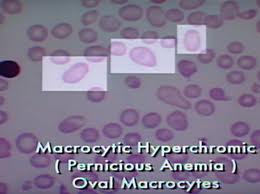Disorders
- Anorexia Nervosa
- Binge Eating Disorder
- Bitot's Spots
- Bulimia Nervosa
- Macrocytic Anemia
- Megaloblastic Anemia
- Night Blindness
- Peptic Ulcer
- Prophylaxis
- Rhodopsin
- Rickets Disease
- Scurvy Disease
- Wilson’s Disease
- Xerophthalmia
- Hemochromatosis
- Siderosis
- Thalassemia
- Sideroblastic Anemia
- Porphyria Cutanea Tarda
- Sickle Cell Anemia
- Kwashiorkor
- Menkes Disease
- Neutropenia
- Keratomalacia
- Beriberi
- Pellagra
- Macrocytic
- Megaloblastic
- Pernicious Anemia
- Scurvy
- Rickets
- Osteomalacia
- Abetalipoproteinemia
- Muscular Dystrophy
- Haemolytic Anaemia
- Cholestatic Constipation
- Pretibial Myxedema
- Cretinism Diesease
- Hypothyroidism
- Hypothyroidism
- Feline Hyperthyroidism
- Graves Disease
- Plummer’s Disease
- Thyrotoxicosis
- Acrodermatitis Enteropathica
- Congenital Hypothyroidism
- Hashimoto’s Thyroiditis
- Hyperthyroidism
- Keshan Disease
- Lose Weight with Hypothyroidism
- Metal Fume Fever
- Postpartum Thyroiditis
- Thyroid Storm
- Subclinical Hypothyroidism
Macrocytic Hypochromic Anemia
Description

Macrocytic anemia is a one of the broad categories of anemia. Anemia broken down into its literal format, means without blood. It is a condition where there is a lack of sufficient red blood cells, which sometimes includes a lack of hemoglobin too. Due to the lack of red blood cells present, it is difficult for blood to transfer necessary oxygen to tissue and organs throughout the body. There are three general ways anemia occurs. One is through severe blood loss, another is from massive destruction of red blood cells and the last is inadequate red blood cell production. Macrocytic anemia includes Megaloblastic anemia, Pernicious anemia, alcoholism, and drugs that interfere with DNA replication like zidovudine and methotrexate, which all cause DNA synthesis to fail leading to other complications within the body.
Symptoms of Macrocytic Anemia
The single biggest factor of anemia in most people is a general feeling of fatigue or weakness. People with Macrocytic anemia or other forms of anemia experience a sense of tiredness and being worn out a lot, even if they get a lot of sleep. It is almost as though you cannot rest enough or have a normal energy level no matter what. Some people experience a shortness of breath or even heart palpitations, but that is usually only in very extreme and severe cases. It is also common for those with severe anemia to have a pale skin color, almost a lack of color, which is due to the abnormally low red blood cells in the body. Otherwise it is difficult to diagnose Macrocytic anemia as many people suffer very few symptoms or do not recognize the fatigue or weakness as being related to anemia. So many individuals feel tired for a lot of reasons, such as insomnia, anxiety and stress that it does not strike them enough to seek a doctor’s opinion about the cause, rather most people just turn to caffeine to pick them up during the day.
Treatment and Prevention of Macrocytic Anemia
The only way to be certain when diagnosing Macrocytic anemia is to have a full blood count down and analysis of not only how many red blood cells there are, but also how many the body produces or how quickly. Once a diagnosis is made it is then necessary to narrow down the scope of the anemia and the severity of it. Most forms of anemia are due to a lack of iron or B12 in the blood which can be easily corrected through diet and or supplements. Although, sometimes the problem of anemia is not from a lack of iron-rich foods in a diet, but rather it is caused from the inability of the body to absorb iron. Therefore it is also important to consider the amount of foods that are believed to inhibit iron absorption. More or less, with a little education a diet can be developed to treat most anemias. Only the most severe cases of anemia require a blood transfusion or drastic measures along those lines.
Anemia Diet Suggestions
It is known that foods rich in iron will reduce the risk of Macrocytic anemia and even treat existing conditions. Sometimes an iron supplement may be required in addition to get the body’s level of B12 or iron back to a range that is healthy for the red blood cells. Foods that are rich in iron include; lean red meat of all kinds, especially beef liver for a really high dose of iron, spinach and other leafy green vegetables, dried fruits like prunes, apricots and cherries, yams, oysters, whole grains and almonds. In addition to eating plenty of high iron content foods, it is equally important to avoid those foods that hinder the body from absorbing iron. Foods that are known to cause a problem with iron absorption are; all caffeine beverages like coffee, tea and soft drinks, red wine, foods high in sugar like ice cream and candy or chocolate and oddly enough rhubarb and wheat bran make the list.
Conclusion of Macrocytic Anemia
There are many types of anemia that can cause problems with red blood cells; Macrocytic anemia is among the categories that can be treated with proper diet and possibly supplements. More extreme cases of anemia will require more extreme treatment, but as always, a physician is the only one that can truly diagnose a condition and accurately develop a treatment plan.
Hope this article will provide you information about macrocytic anemia.
